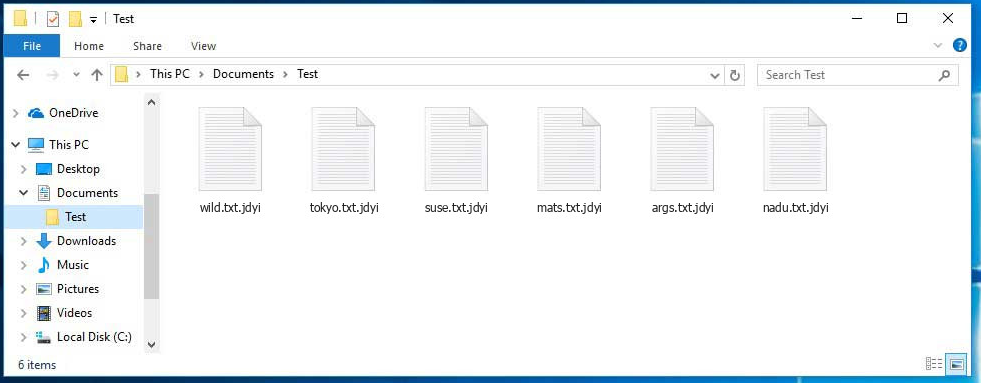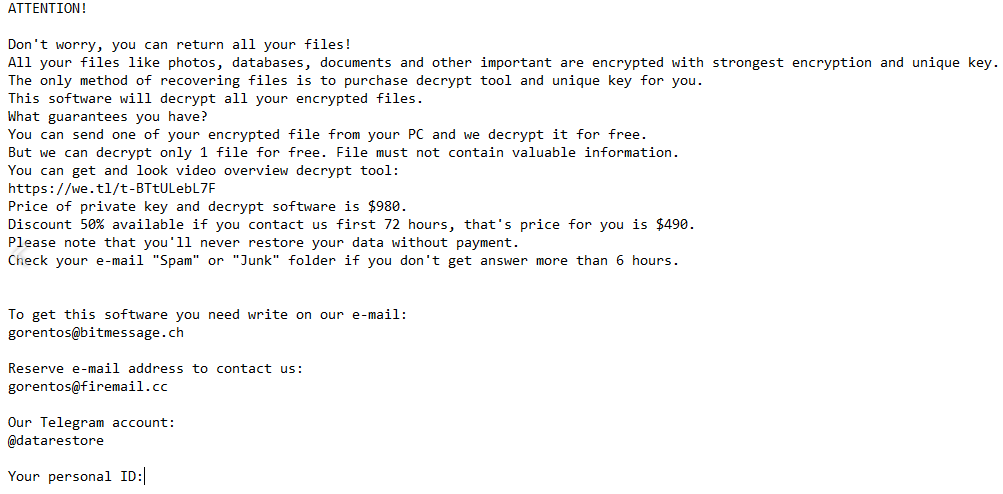What is Jdyi Ransomware
Jdyi is a file-locking ransomware infection. It makes your files unopenable and labels them with a second extension, “.jdyi”. Jdyi Ransomware is regarded as a dangerous threat, known as ransomware or file-encrypting malicious program. Data encoding malicious software is not something every person has heard of, and if you have just encountered it now, you’ll learn the hard way how harmful it could be. Powerful encryption algorithms are used to encrypt your files, and if yours are indeed locked, you will be unable to access them any longer.
Because ransomware victims face permanent file loss, it’s categorized as a highly damaging threat. Crooks will give you the option of recovering files by paying the ransom, but that is not the recommended option. Before anything else, paying will not ensure that files are decrypted. Consider what’s preventing crooks from just taking your money. Moreover, your money would go towards future ransomware and malware. Ransomware already costs billions to businesses, do you really want to support that. When people give into the demands, ransomware steadily becomes more profitable, thus drawing more people who are lured by easy money. You might end up in this type of situation again, so investing the requested money into backup would be wiser because data loss wouldn’t be a possibility. In case you had backup prior to contamination, terminate Jdyi Ransomware virus and restore data from there. If you are not sure about how you got the infection, the most frequent methods will be discussed in the below paragraph.
Jdyi Ransomware distribution methods
You may commonly see file encoding malicious program added to emails as an attachment or on dubious download web pages. There’s often no need to come up with more sophisticated methods as plenty of people aren’t cautious when they use emails and download something. Nevertheless, some ransomware can be distributed using more elaborate methods, which need more time and effort. Hackers add an infected file to an email, write some type of text, and falsely state to be from a trustworthy company/organization. Money-related topics are frequently used as people are more prone to opening those emails. Crooks like to pretend to be from Amazon and notify you that strange activity was noted in your account or some kind of purchase was made. In order to safeguard yourself from this, there are certain things you have to do when dealing with emails. Before proceeding to open the attachment, look into the sender of the email. Do no make the mistake of opening the attached file just because the sender seems real, first you will need to double-check if the email address matches. Evident grammar errors are also a sign. Another rather obvious sign is the lack of your name in the greeting, if a real company/sender were to email you, they would definitely know your name and use it instead of a typical greeting, addressing you as Customer or Member. The file encrypting malicious program could also get in by using not updated computer program. A program has certain weak spots that could be used for malware to get into a system, but vendors fix them soon after they are found. Still, for one reason or another, not everyone is quick to update their programs. Because many malicious software makes use of those vulnerabilities it is critical that your programs frequently get updates. You can also make patches install automatically.
What does Jdyi Ransomware do
Your files will be encrypted as soon as the ransomware gets into your device. You will not be able to open your files, so even if you don’t realize what’s going initially, you’ll know eventually. You will notice that a file extension has been added to all encrypted files, which can help recognize the file encoding malware. Powerful encryption algorithms may have been used to encode your files, which may mean that data is not decryptable. A ransom note will clarify that your files have been locked and how you can restore them. What they will offer you is to use their decryptor, which won’t come for free. The price for a decryptor should be displayed in the note, but if it’s not, you’ll be asked to send them an email to set the price, it may range from some tens of dollars to possibly a couple of hundred. Obviously, complying with the demands isn’t recommended. Before you even think about paying, try all other options first. Maybe you’ve simply forgotten that you have made copies of your files. Or, if luck is on your side, a free decryption software could be available. If the ransomware is decryptable, a malware specialist might be able to release a utility that would unlock Jdyi Ransomware files for free. Consider that before paying the requested money even crosses your mind. You would not face possible data loss if you ever end up in this situation again if you invested part of that money into buy backup with that money. If you had saved your most essential files, you just terminate Jdyi Ransomware virus and then recover files. In the future, make sure you avoid ransomware as much as possible by familiarizing yourself its distribution ways. At the very least, do not open email attachments left and right, update your software, and stick to secure download sources.
Ways to remove Jdyi Ransomware
If you want to completely terminate the ransomware, you will have to get ransomware. If you attempt to fix Jdyi Ransomware manually, you might end up harming your system further so we do not suggest it. Instead, we encourage you use an anti-malware tool, a method that would not put your computer in jeopardy. An anti-malware tool is created for the purpose of taking care of these types of threats, it may even prevent an infection. Once you have installed the malware removal utility, simply scan your computer and authorize it to eliminate the threat. Do not expect the anti-malware tool to help you in data recovery, because it’s not capable of doing that. If the data encoding malware has been eliminated completely, recover your files from where you are keeping them stored, and if you do not have it, start using it.
Offers
Download Removal Toolto scan for Jdyi RansomwareUse our recommended removal tool to scan for Jdyi Ransomware. Trial version of provides detection of computer threats like Jdyi Ransomware and assists in its removal for FREE. You can delete detected registry entries, files and processes yourself or purchase a full version.
More information about SpyWarrior and Uninstall Instructions. Please review SpyWarrior EULA and Privacy Policy. SpyWarrior scanner is free. If it detects a malware, purchase its full version to remove it.

WiperSoft Review Details WiperSoft (www.wipersoft.com) is a security tool that provides real-time security from potential threats. Nowadays, many users tend to download free software from the Intern ...
Download|more


Is MacKeeper a virus? MacKeeper is not a virus, nor is it a scam. While there are various opinions about the program on the Internet, a lot of the people who so notoriously hate the program have neve ...
Download|more


While the creators of MalwareBytes anti-malware have not been in this business for long time, they make up for it with their enthusiastic approach. Statistic from such websites like CNET shows that th ...
Download|more
Quick Menu
Step 1. Delete Jdyi Ransomware using Safe Mode with Networking.
Remove Jdyi Ransomware from Windows 7/Windows Vista/Windows XP
- Click on Start and select Shutdown.
- Choose Restart and click OK.

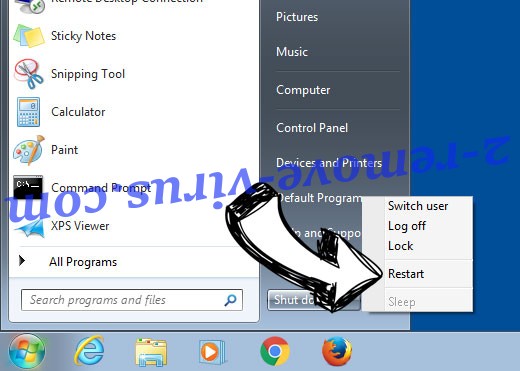
- Start tapping F8 when your PC starts loading.
- Under Advanced Boot Options, choose Safe Mode with Networking.

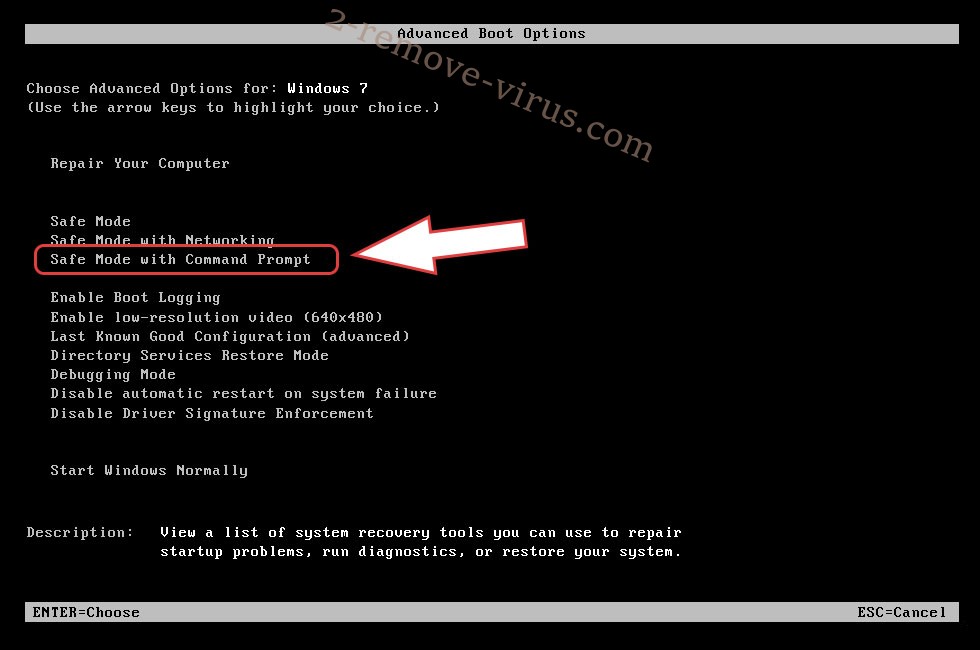
- Open your browser and download the anti-malware utility.
- Use the utility to remove Jdyi Ransomware
Remove Jdyi Ransomware from Windows 8/Windows 10
- On the Windows login screen, press the Power button.
- Tap and hold Shift and select Restart.

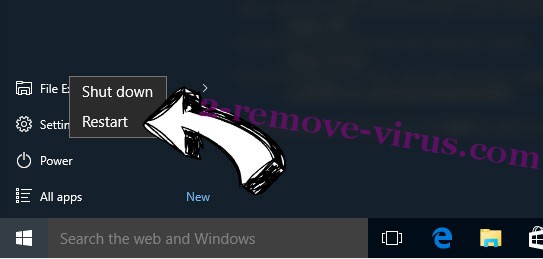
- Go to Troubleshoot → Advanced options → Start Settings.
- Choose Enable Safe Mode or Safe Mode with Networking under Startup Settings.

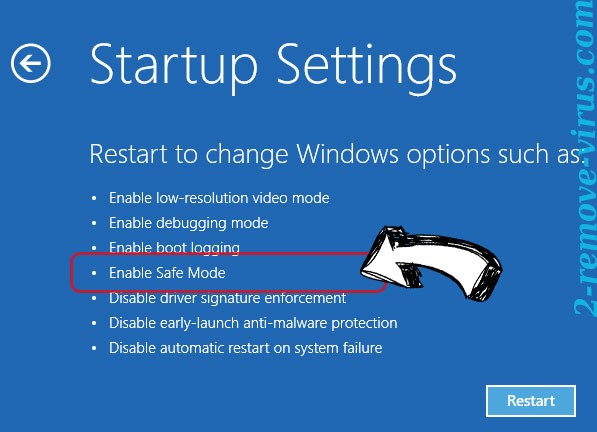
- Click Restart.
- Open your web browser and download the malware remover.
- Use the software to delete Jdyi Ransomware
Step 2. Restore Your Files using System Restore
Delete Jdyi Ransomware from Windows 7/Windows Vista/Windows XP
- Click Start and choose Shutdown.
- Select Restart and OK


- When your PC starts loading, press F8 repeatedly to open Advanced Boot Options
- Choose Command Prompt from the list.

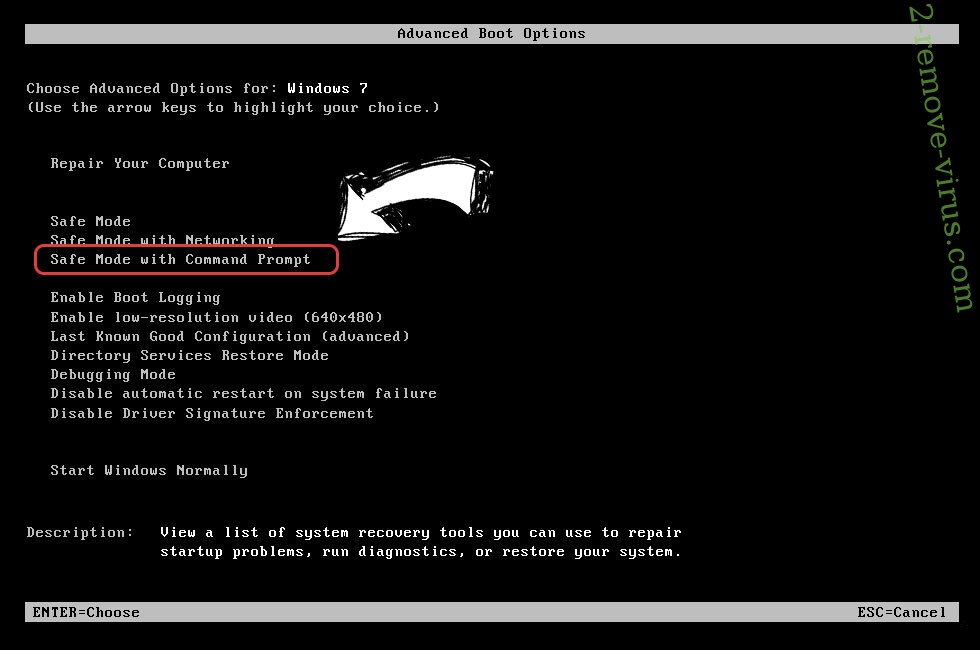
- Type in cd restore and tap Enter.

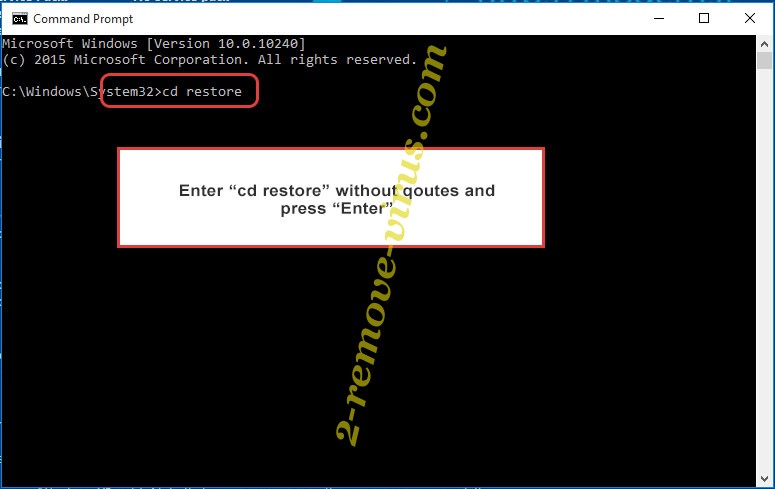
- Type in rstrui.exe and press Enter.

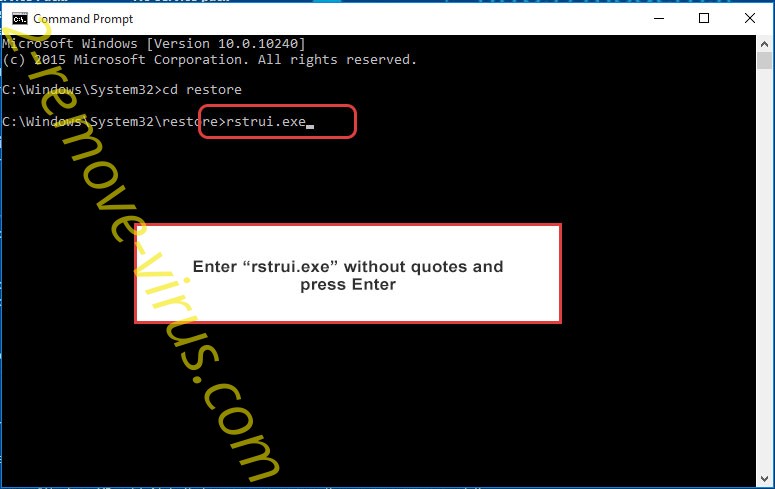
- Click Next in the new window and select the restore point prior to the infection.

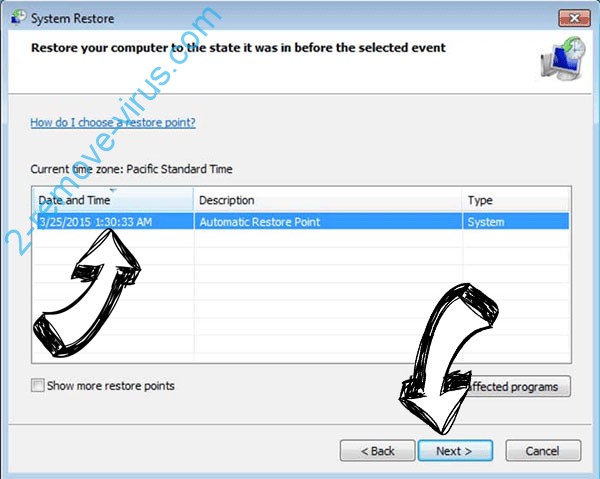
- Click Next again and click Yes to begin the system restore.

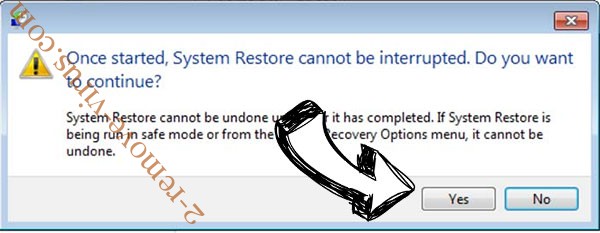
Delete Jdyi Ransomware from Windows 8/Windows 10
- Click the Power button on the Windows login screen.
- Press and hold Shift and click Restart.


- Choose Troubleshoot and go to Advanced options.
- Select Command Prompt and click Restart.

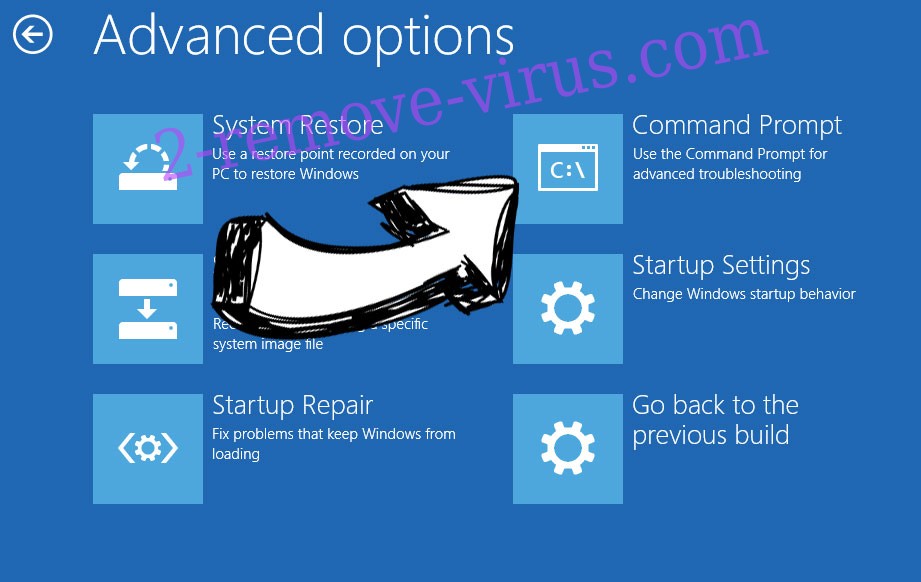
- In Command Prompt, input cd restore and tap Enter.


- Type in rstrui.exe and tap Enter again.


- Click Next in the new System Restore window.

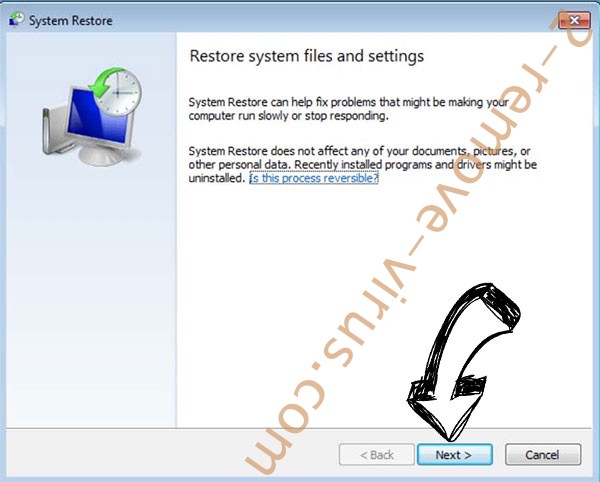
- Choose the restore point prior to the infection.


- Click Next and then click Yes to restore your system.


Site Disclaimer
2-remove-virus.com is not sponsored, owned, affiliated, or linked to malware developers or distributors that are referenced in this article. The article does not promote or endorse any type of malware. We aim at providing useful information that will help computer users to detect and eliminate the unwanted malicious programs from their computers. This can be done manually by following the instructions presented in the article or automatically by implementing the suggested anti-malware tools.
The article is only meant to be used for educational purposes. If you follow the instructions given in the article, you agree to be contracted by the disclaimer. We do not guarantee that the artcile will present you with a solution that removes the malign threats completely. Malware changes constantly, which is why, in some cases, it may be difficult to clean the computer fully by using only the manual removal instructions.
